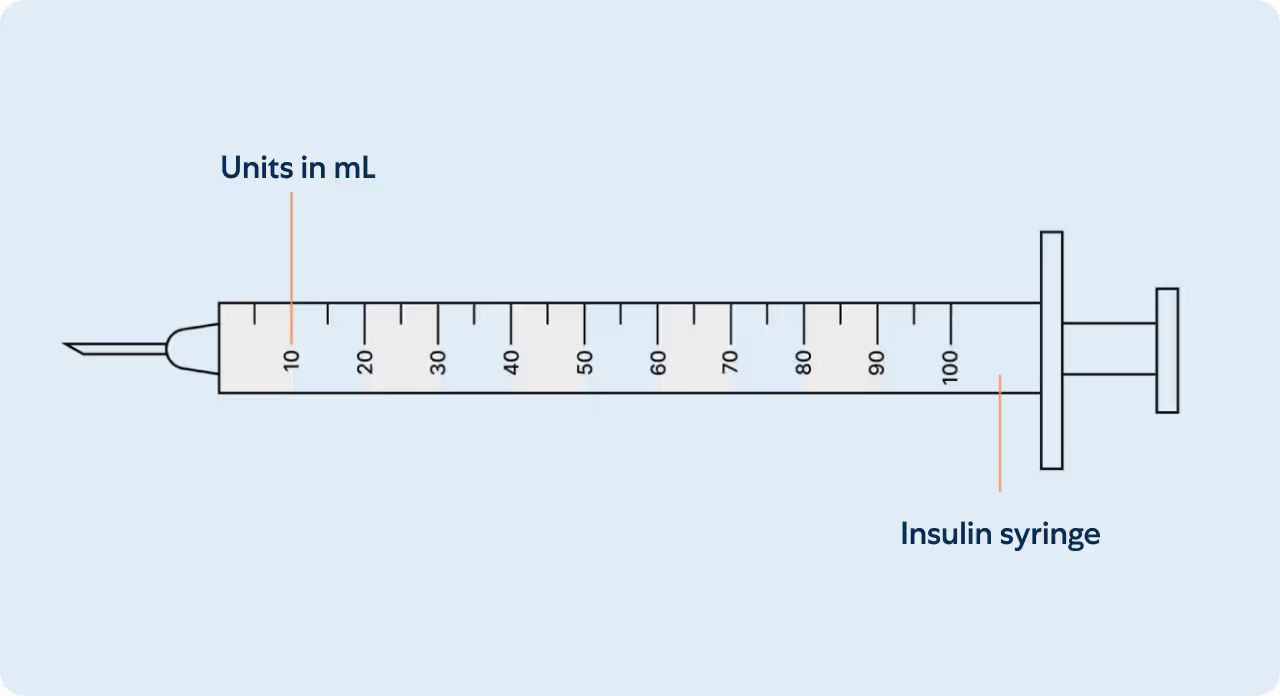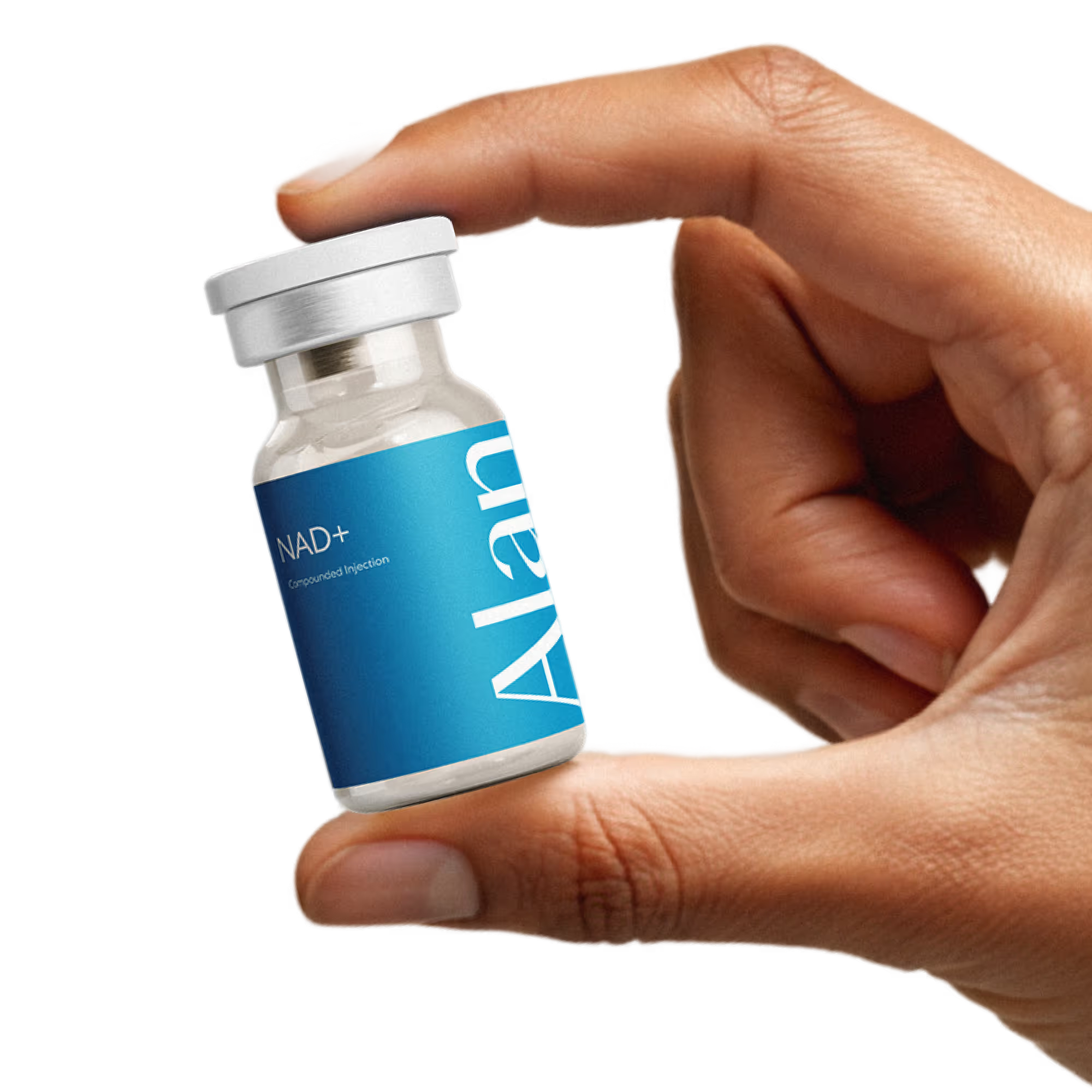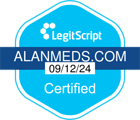Storage
Keep refrigerated when not in use. Avoid freezing or exposing the vial to direct heat or sunlight.
Instructions
This information is for individuals who have been prescribed NAD+ Injections by an Alan Health provider.
NAD+ (nicotinamide adenine dinucleotide) is a coenzyme that plays a key role in cellular energy production, DNA repair, and overall metabolic function. As we age or experience stress, our natural NAD+ levels decline—leading to fatigue, brain fog, and slower recovery. Injectable NAD+ delivers this essential molecule directly into the bloodstream for fast, effective support.
Inject subcutaneously twice per week, or as directed by your healthcare provider, using a vial and syringe.
{{injection-video}}
Clean the injection site, insert the needle at a 45–90-degree angle, and inject the medication slowly. Hold until fully administered. Rotate injection sites daily to avoid irritation.
- Prep Your Supplies: Wash hands and gather the NAD+ injection vial, insulin syringe, alcohol swabs, and a sharps container. Inspect the solution—it should be clear and free of particles.
- Draw the Dose: Clean the rubber top of the vial with an alcohol swab. Inject air into the vial equal to your prescribed dose, then draw up the exact amount. Remove any air bubbles by tapping the syringe and pushing gently on the plunger.
- Pick an Injection Site: Use the abdomen (at least 2 inches from the belly button), thigh, or upper arm. Clean the area with an alcohol swab and allow it to dry completely.
- Inject: Gently pinch the skin. Insert the needle at a 45–90° angle, depending on needle length and body type. Inject the medication slowly and steadily. Once done, remove the needle and apply gentle pressure with a clean swab. Dispose of the syringe safely in a sharps container.
NAD+ Injection is prescribed with a customized, clinically-guided titration plan. Starting low and increasing gradually helps your body adapt to the medication—minimizing side effects while maximizing long-term benefits.
Your titration journey is guided by your Alan clinician and tailored to your health profile. Our standard titration schedule should be followed, unless your prescriber tells you differently:
{{titration-table-nad-injection}}
If your medication has a seal, watch this video to learn how to remove it.
To learn how to inject your medication subcutaneously, please watch this video.
Missed Dose? If you miss a dose, skip the missed dose and continue with your regular schedule. If you have any questions about your dosing schedule, contact your Alan Health provider.
Understanding your insulin syringe

Measuring your dose
Insulin syringes are used for subcutaneous injections. They are marked in Units on the insulin syringe barrel (see illustration). Insulin syringes facilitate the precise measurement of tiny amounts of liquids which are ideal for medications such as insulin that require small and accurate dosing. Unit marks are also expressed in mL’s and can be interchangeably referenced. A prescriber may write a prescription in Units or in mL’s.
Within the amount of liquid is the prescribed mg dosage of your medication (see mg chart). Milligrams (mg) is not an amount of liquid, but rather the amount of drug that is within. The conversion between units and milligrams varies depending on the concentration of the product being used.
What can I expect?
Safety information
The most common side effects of NAD+ injections are mild and temporary. These may include injection site reactions (such as redness, soreness, or swelling), headache, nausea, flushing, or a sense of chest or head pressure.
In rare cases, individuals may experience more serious symptoms such as allergic reactions, rapid heart rate, dizziness, or difficulty breathing. If you experience any of these symptoms, seek immediate medical attention.
A full list of potential side effects can be found here.
Do not use this product if you are currently pregnant, breastfeeding, or planning to become pregnant or breastfeed without first consulting a licensed healthcare provider.
NAD+ injections may not be appropriate for individuals with:
- Active cancer
- Severe liver or kidney disease
- Cardiovascular instability
- A known allergy to NAD+ or any ingredients in the formulation
Always tell your provider about your full medical history before starting any new treatment.
Note: The above statements have not been evaluated by the Food and Drug Administration. This product is not intended to diagnose, treat, cure, or prevent any disease.
Frequently Asked Questions
What is NAD+ and why is it important?
NAD+ (nicotinamide adenine dinucleotide) is a coenzyme found in every cell of your body. It’s essential for energy production, cellular repair, and brain function—but levels naturally decline by more than 50% with age, stress, and illness. Supplementing NAD+ can help restore focus, energy, and resilience.
How long will it take to feel results?
Some people notice a boost in focus or energy within hours or days, especially after the first few doses. For most, benefits like reduced fatigue, clearer thinking, and better recovery build gradually over several weeks of consistent use. Think of it as recharging your body’s internal battery.
What will I feel after the injection?
Most people feel completely fine after an NAD+ injection. Some may experience a brief sensation of flushing, nausea, or headaches—these are temporary and typically fade within minutes. Some users report feeling energized or clear-headed shortly after, but individual responses can vary.
How much NAD+ is in each vial?
Each vial contains 10 milliliters (mL) of sterile NAD+ solution, with a concentration of 100 milligrams per milliliter (mg/mL).
Can NAD+ help with brain fog or burnout?
Yes—that’s one of the main reasons people use it. Many users report improvements in mental clarity, focus, and energy over time, especially when NAD+ is used consistently as part of a broader wellness plan.
What’s the difference between the NAD+ injection, nasal spray, and patch?
All three options deliver NAD+, but they differ in speed, bioavailability, and focus areas. Some people use them in combination for layered support:
- Injection: The fastest and most bioavailable. Delivers NAD+ directly into the bloodstream for quick cellular uptake—best for full-body effects like recovery, brain fog, and overall energy.
- Nasal Spray: Designed for on-the-go brain support. Absorbs through the nasal mucosa to target the brain, promoting mental clarity and focus—great for busy days, jet lag, or afternoon slumps.
- Patch: Slow and steady. Releases NAD+ over several hours through the skin, offering gentle, sustained support. A good no-needle option and can be stacked with other treatments.
Who should not use NAD+ injections?
NAD+ injections aren’t suitable for everyone. Avoid use if you have a known allergy to NAD+, severe liver or kidney disease, active cancer, or if you’re pregnant or breastfeeding. People with serious heart conditions should consult their provider first, as high doses may not be appropriate.
Can I combine this with other treatments or supplements?
Yes, in most cases. NAD+ generally pairs well with other supplements, medications, and wellness treatments. Your provider will review your health history to ensure there are no conflicts.
Additional support
For details about your medication and dosing, please log in to your patient portal. Your physician is here to help with any medical questions. If you are experiencing a medical emergency, call 911 right away.













